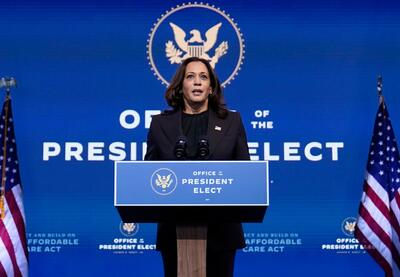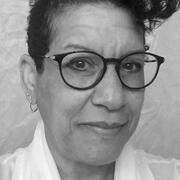In an election year unlike most, let’s take a moment as educators to understand what a historic opportunity it is to lift up the first-ever woman vice president-elect of the United States. It is even more remarkable to note that Kamala Harris is the biracial daughter of Black and South Asian parents who are U.S. immigrants.
Let’s acknowledge that the intersection of her multiple identities reflects the realities of many of the students who learn in our in-person and remote classes across the country. This representation is historic and worthy of celebration.
Black women, Asian American women, BIPOC of all identities and immigrants have always played foundational roles in this nation, whether that work is acknowledged or not. Harris’ election to this office provides all students the opportunity to see themselves as integral to the determination of a democratic future in the truest sense of the word.
It matters that the students we teach see themselves in this historic moment. Because when they don’t see the reality of our diversity—whether that’s in books, in the media or in positions of power—too many children feel disconnected from the workings of the world and too many others miss out on different ways of understanding the world.
All too often, BIPOC women, especially, are relegated to the margins. For example, as the only student who was an American descendant of slavery in the largest department of the graduate school I attended, I often felt and witnessed the marginalization of BIPOC women while earning my Ph.D. in English literature.
One day in the hallway, I overheard a white classmate comment that the professor—the only Black woman professor in our department—“let her race get in the way” of her analysis of a work of fiction. In that moment, I noted to myself that this student did not see how his race was getting in the way of understanding a perspective different from his own.
I would often see this same dynamic, the marginalization of Black women, in my own classrooms with the courses that I later taught. And I saw that dynamic in the literature itself. More often than not, BIPOC women aren’t just marginalized—they’re actually pushed off of the page altogether.
For my dissertation, I studied Ralph Ellison’s 1952 novel, Invisible Man. In it, he explores how people of African descent in the U.S. are forced to navigate a system rife with obstacles that threaten their very existence. I learned through my research that Ellison had one significant regret about his famous work: He decided to leave out a chapter he’d written about Mary Rambo, a Black woman.
The missing chapter, the erasure of the Black woman whose presence is of such importance elsewhere in the novel, made me want to find a more complete picture of Black presence on the written page. So I paired my reading of Ellison with that of science fiction writer Octavia Butler—the first published Black woman science fiction writer in the United States—to bring Black women directly and decidedly upfront in the discourse. By lifting up the stories by and about Black women, I recovered an often-neglected part of our story as a nation.
Now, with this moment, with the election of Kamala Harris to the office of the vice president, the role of women of color in our national history is center stage for everyone to see, especially—and most importantly—the students we teach.
As educators, we are called to this moment. We need to center the presence of those whose identities have too often been pushed into the margins and advocate for all, particularly those who—like my professor, the fictional Mary Rambo, multitudes of BIPOC women and girls like me, and many immigrants to the United States—have been intentionally excluded. We need to acknowledge those who have often borne the brunt of thinly veiled or downright obvious abuse in the push to extend the promise of life, liberty and the pursuit of happiness.
This is the perfect point in time for educators to help students focus on the progress that has been made thus far and the work that is yet to come for our nation to achieve a truly diverse democracy.
It is that democratic principle, after all, that Butler and Ellison both celebrate in their novels, even as they recount the oppressive challenges that living in the U.S. poses for BIPOC. It is that democratic principle and the work that remains that motivated record numbers of U.S. citizens to brave life-threatening obstacles to cast their votes.
It is that democratic principle educators can further embrace with the conversations we now share with our students and the curriculum we now offer them.
It is that democratic principle that educators can lift up while we learn with our students even more effective and innovative ways to imagine civic engagement, as there is still so much work to do.
And while we note the importance of the U.S. election process during a struggle the likes of which the nation has not seen, this is a remarkable opportunity for educators to remember to support students in their understanding of the historical importance of the role of Vice President-elect Kamala Harris in it. It’s time to move our project of democracy forward with all of the diverse identities of the students in our classrooms reflected in highly visible ways.



0 COMMENTS